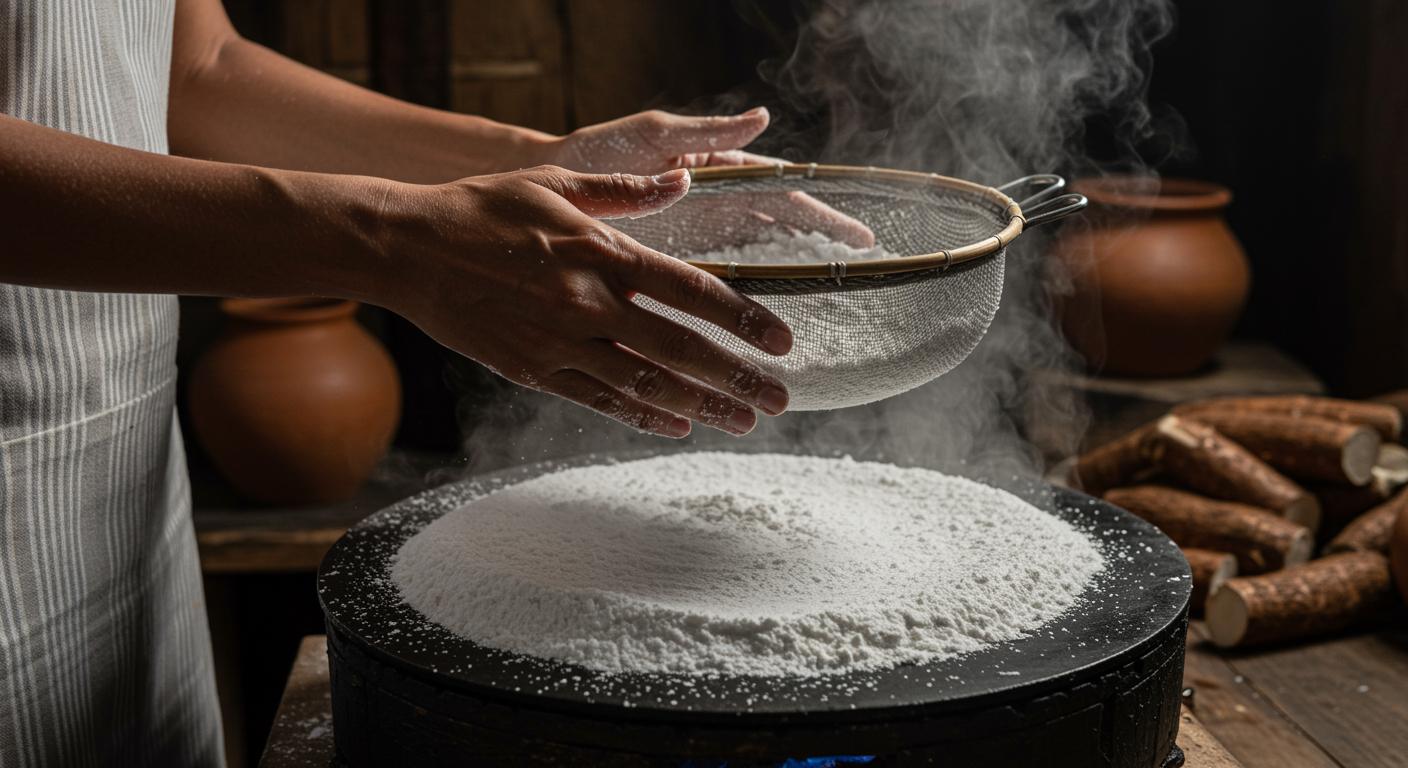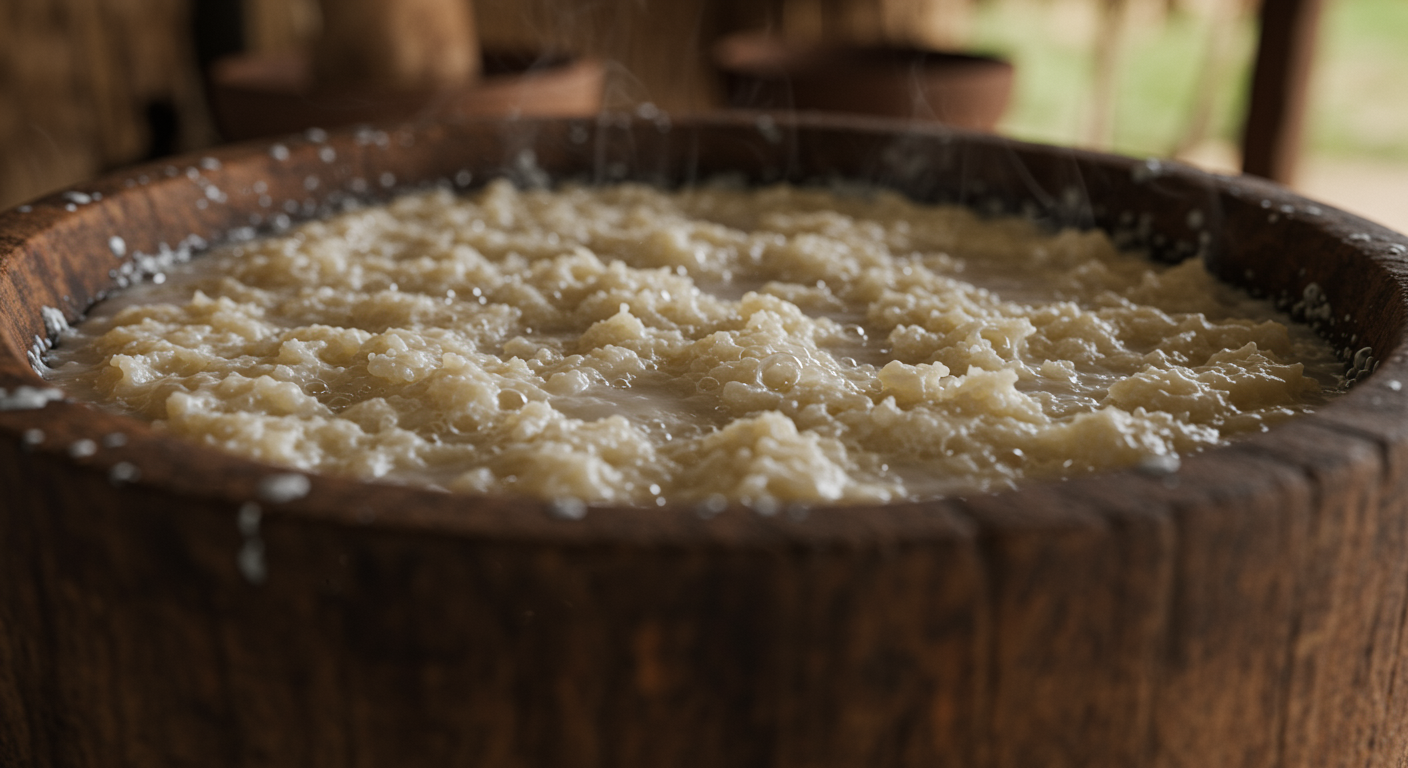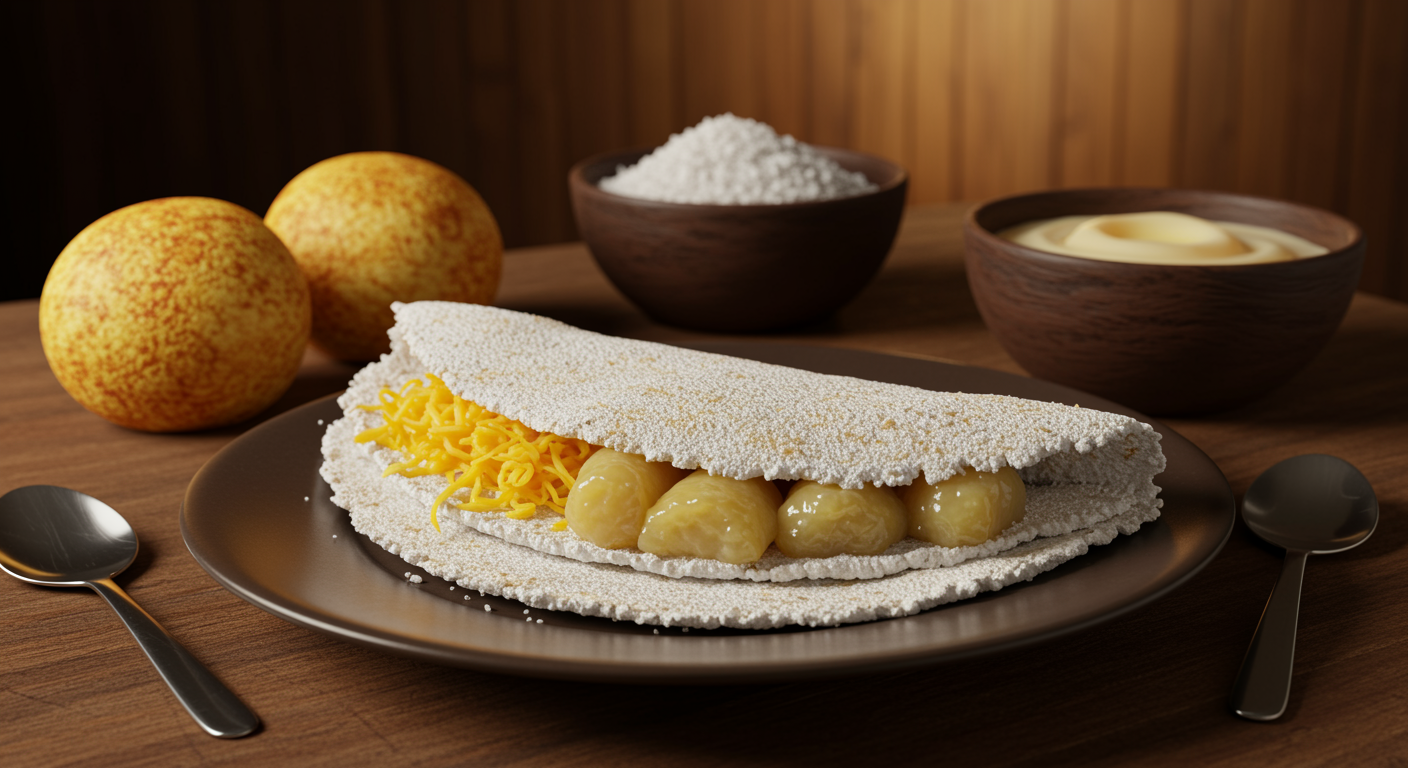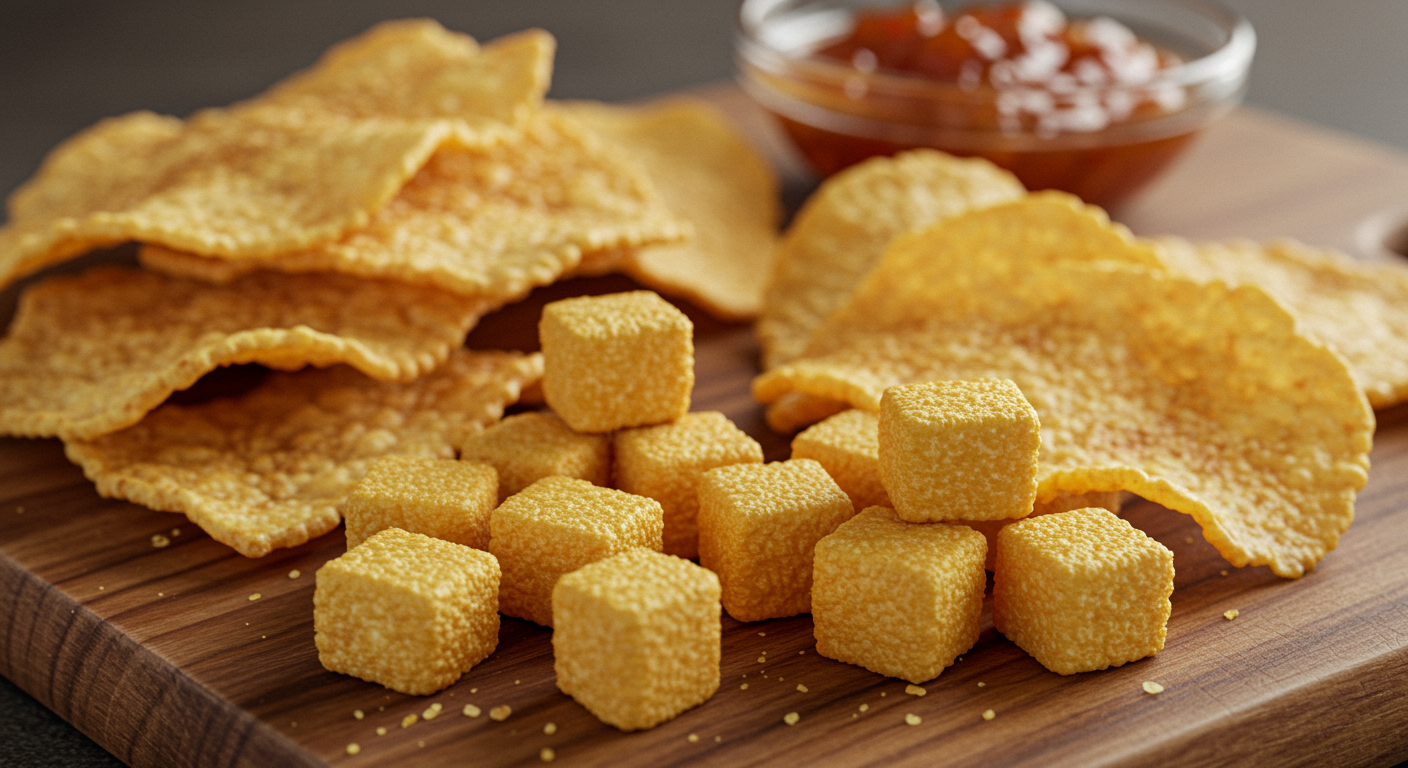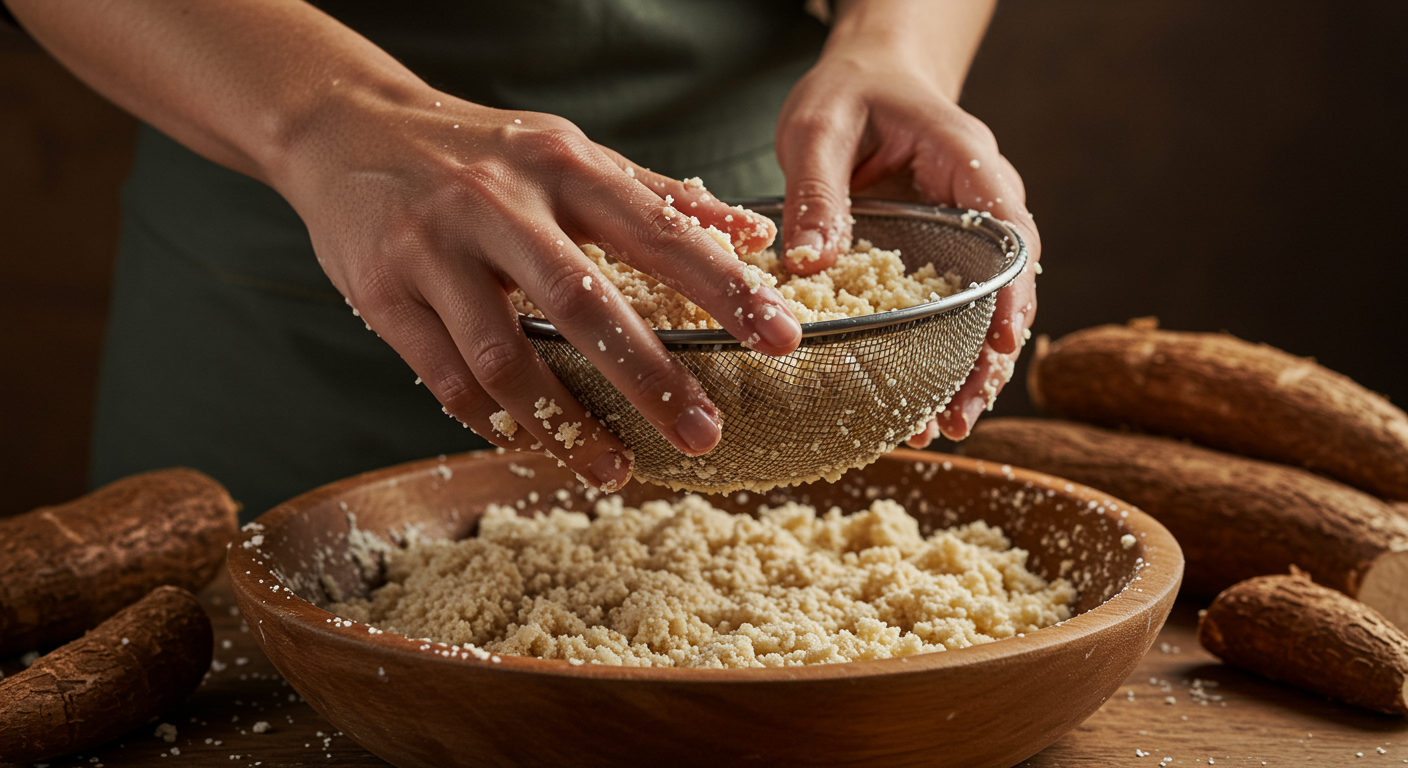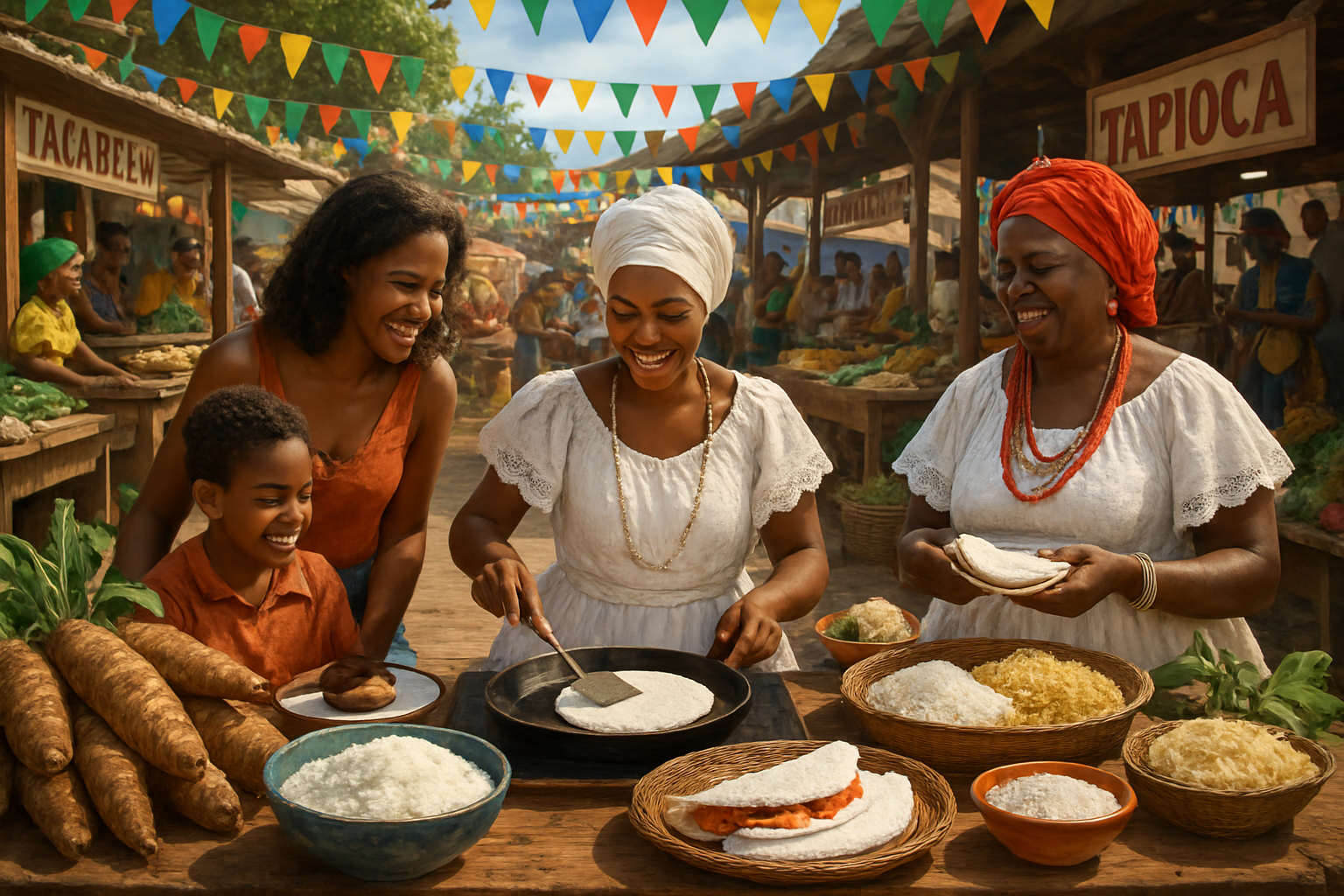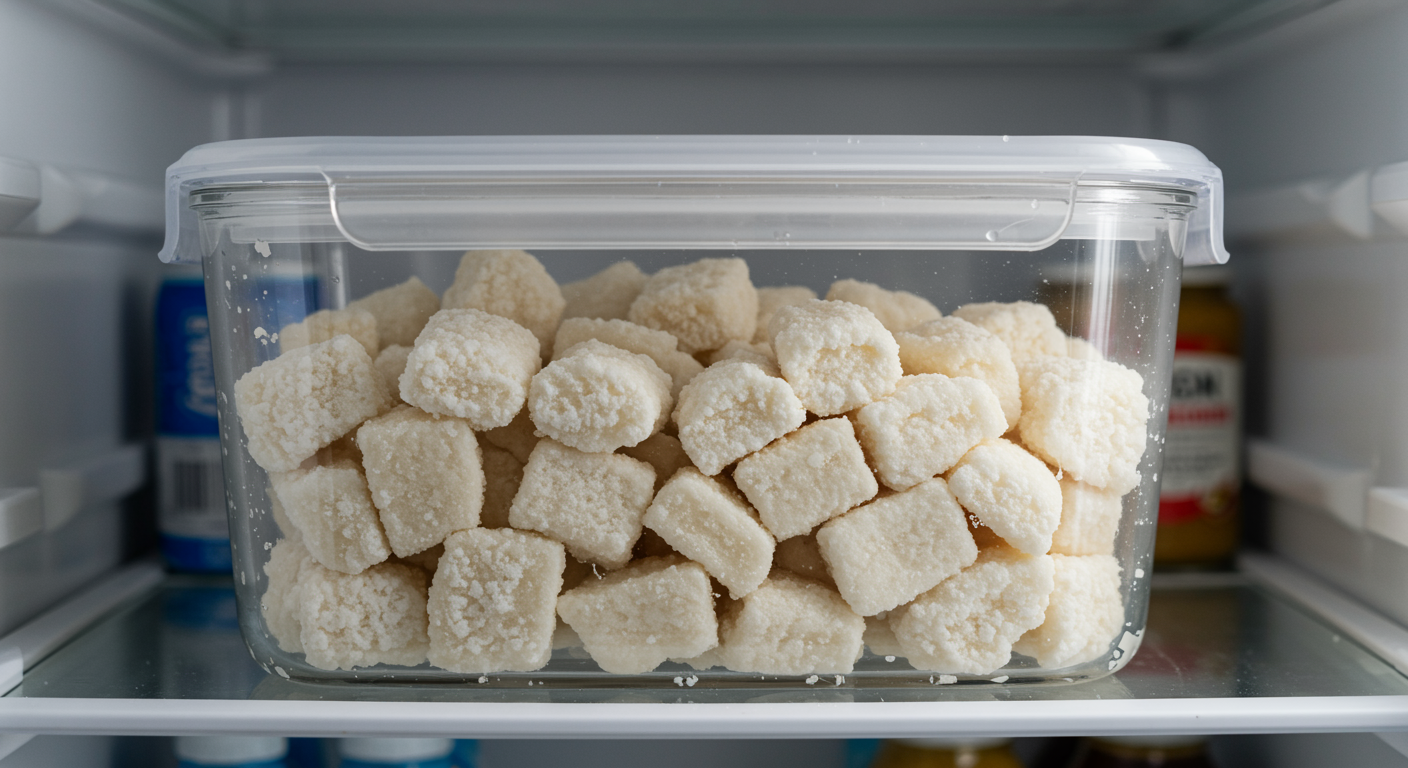Tapioca, in its most beloved and authentic form, is a culinary delight celebrated across Bahia for its unique and captivating texture. This delicate balance of soft, pliable, and subtly chewy, often complemented by edges that can be wonderfully crisp, is the hallmark of an expertly prepared tapioca. Achieving this impeccable consistency is not merely a matter of culinary luck or casual preparation; it is a profound journey into mastering the “secrets of the starch”—an intricate and deeply nuanced understanding of the raw material, the precise hydration process, and the sophisticated cooking techniques passed down through generations. In the vibrant interior of Bahia, where tapioca preparation has been elevated to an art form, optimizing its texture is a generational skill, embodying the deep expertise, discerning experience, and cultural authority of local producers and skilled cooks. This comprehensive guide meticulously delves into these crucial elements, demystifying the underlying science and celebrating the enduring artistry behind producing tapioca with an impeccable, unforgettable texture that truly honors its heritage.
The Raw Material: Cassava Variety and the Alchemy of Starch Quality
The foundational journey to perfect tapioca texture begins long before the pure starch ever hits the griddle, rooted deeply and intrinsically in the inherent quality of the cassava plant (Manihot esculenta), or mandioca itself. Different varieties of this resilient tuber yield starches with incredibly diverse characteristics that profoundly and fundamentally influence the final product’s mouthfeel, binding properties, and overall consistency. Understanding these distinctions is the first secret to textural mastery.
Cassava Varieties and Their Unique Starch Profiles
- Bitter Cassava (Mandioca Brava): This variety is predominantly and strategically cultivated and utilized for commercial tapioca goma production throughout Bahia’s interior. This preference stems from its inherently higher starch content, its remarkable resilience to challenging environmental conditions, and its ability to produce a robust starch. The starch derived from bitter varieties typically contains a higher proportion of amylopectin, a branched-chain glucose polymer, which contributes to a tapioca that is generally more pliable, more cohesive, and less prone to crumbling. This results in a desirable elasticity and a satisfying, soft chewiness, which are highly prized textural attributes.
- Sweet Cassava (Mandioca Mansa/Doce): While primarily consumed boiled, fried, or baked as a direct vegetable, its starch can also be meticulously extracted. However, this starch may yield a tapioca that is slightly softer or possess a less cohesive structure than that derived from bitter varieties, though it remains palatable and usable for certain applications. The difference in amylose-amylopectin ratio directly impacts how the starch granules swell and interact with heat.
The specific starch granules, regardless of cassava variety, possess distinct molecular structures (particularly the crucial ratio of amylose to amylopectin) that interact uniquely and profoundly with water and heat during the cooking process. This inherent quality dictates precisely how the starch will hydrate, how it will gelatinize (the process of starch granules swelling and rupturing), and, ultimately, how it will form the cohesive tapioca flatbread. These molecular interactions directly impact the tapioca’s final chewiness, its desired softness, and its overall cohesion. Experienced Bahian farmers and dedicated processors are acutely aware of these subtle yet significant distinctions. Through generations of practice and observation, they meticulously select optimal cassava types that consistently produce the best goma for their desired tapioca texture. Their profound experience and specialized expertise in varietal selection form the fundamental bedrock upon which the entire quality of the starch is built, ensuring authenticity and consistently desirable textural outcomes. This ancestral wisdom is a testament to their inherent authority in cultivation.
The Immutable Impact of Terroir on Starch Characteristics
The unique terroir of Bahia’s interior—encompassing the intricate interplay of soil composition, prevailing microclimates, nuanced topography, and centuries of localized agricultural practices—also subtly, yet powerfully, influences the intricate chemical makeup of the cassava roots. This, in turn, directly affects the fundamental physical and chemical properties of the extracted starch. For instance, mineral-rich soils or specific patterns of rainfall can significantly contribute to variations in starch granule size, shape, or overall composition. These minute differences can lead to subtle yet discernible nuances in the final tapioca texture, offering distinct regional characteristics that are prized by connoisseurs. Artisanal producers in these areas leverage this deep, inherited understanding of their local environment to cultivate cassava that consistently yields high-quality starch. This profound connection between the land and the product significantly enhances the authenticity, reliability, and inherent trustworthiness of their traditional tapioca products, making each region’s tapioca subtly unique.
The Hydration Art: The Alchemy of Achieving the Perfect Goma Hidratada
The pivotal transformation of dry cassava starch (polvilho) into goma hidratada (hydrated tapioca starch) is an absolutely crucial step that directly and unequivocally dictates the final texture and overall quality of the tapioca flatbread. This is where the ancient art of culinary tradition seamlessly meets the empirical science of food preparation, demanding both precise control over moisture levels and meticulous, experienced technique. This process is the key to unlocking the starch’s full textural potential.
The Elusive Ideal Moisture Content
The ultimate goal of this hydration process is to achieve a goma that is perfectly and optimally hydrated. This ideal state can be recognized by several sensory indicators:
- Appearance: When properly hydrated, the goma should gracefully resemble damp, fine snow or feel like soft, coarse sand—it should never appear as a wet, clumpy paste, nor should it feel like a completely dry, powdery substance. The individual granules should be distinct yet subtly moist.
- Tactile Sensation: When a small amount is squeezed lightly but firmly in the palm of the hand, it should coalesce and clump together cohesively. However, when the pressure is released, it should effortlessly crumble apart, indicating the correct moisture balance without excessive stickiness.
- Flavor (Raw): The raw, hydrated goma should possess a neutral, clean flavor, entirely devoid of any off-flavors or sour notes, which could indicate spoilage or improper processing.
The consequences of improper hydration are significant: too much water will inevitably result in a sticky, dense, and potentially gummy tapioca that stubbornly adheres to the pan and regrettably lacks the desired delicate crispness and pliability. Conversely, too little water will prevent the individual starch granules from fully gelatinizing and binding effectively, leading to a frustratingly crumbly, dry, and uncohesive tapioca that readily falls apart during cooking. The precise amount of water required can subtly vary depending on the polvilho’s initial dryness, the ambient humidity of the environment, and even the specific variety of cassava starch, making it a nuanced skill meticulously honed by long-term, hands-on experience and intuitive understanding. This mastery is a clear demonstration of the expertise involved.
The Sacred Sifting and Rubbing Technique (Peneirar)
The traditional and time-honored method for achieving impeccably uniform hydration and a consistently desirable texture involves a meticulous process of “rubbing” the dry polvilho with water, either gently through a fine sieve (peneira) or delicately between the hands. This technique ensures optimal dispersion and refinement of the starch.
- Gradual Water Sprinkling: Water is added very gradually, usually by sprinkling it with a light hand, over the dry polvilho. This controlled addition prevents over-hydration in any single area.
- Vigorous Rubbing/Sifting: The mixture is then gently yet vigorously rubbed through a fine sieve or carefully agitated by hand. This crucial action serves to evenly distribute the moisture throughout the starch, effectively breaking up any stubborn lumps or agglomerations, and separating the starch into fine, uniformly hydrated granules. This ensures that each individual granule is optimally prepared to gelatinize cohesively and uniformly when subjected to heat.
- Essential Resting Period: Allowing the newly created goma hidratada to rest for a short but sufficient period (typically 15-30 minutes) before cooking is a vital step. This resting time enables the moisture to fully penetrate and equalize evenly throughout all the starch granules, thereby further optimizing its inherent textural properties and ensuring a more consistent cooking outcome.
This meticulous, hands-on process, passed down through countless generations, is a hallmark of artisanal tapioca production throughout Bahia. It showcases the unparalleled expertise, inherent authority, and profound trustworthiness of those who painstakingly prepare it, underscoring the value of traditional methods in achieving superior quality. The consistency achieved through this manual skill is difficult to replicate industrially.
The Cooking Mastery: Heat, Time, and the Precision of Technique
Even with the most perfectly hydrated goma, the final, delectable texture of tapioca is ultimately and profoundly determined by the cooking process on the chapa (griddle or pan). This stage demands unwavering attention to minute detail, precise control over heat, and impeccable timing, honed through extensive practice.
1. Achieving Optimal Pan Temperature
The skillet or traditional chapa must be preheated to the absolutely correct and stable temperature before any goma is added. This is a critical factor for successful tapioca preparation.
- Temperature Too Low: If the pan is not sufficiently hot, the starch granules will hydrate but will fail to gelatinize and bind quickly enough. This will inevitably result in a dense, excessively chewy, or even disappointingly rubbery tapioca that may stubbornly stick to the pan and lack the desired delicate crispness.
- Temperature Too High: Conversely, if the heat is excessive, the tapioca will rapidly burn and brown on the outside before the interior has had a chance to fully cook. This leads to an unappetizing burnt exterior with a raw, gritty, or gummy interior. It can also cause the tapioca to dry out too rapidly, making it brittle and prone to breakage.
- The Ideal Temperature: A consistent medium-low to medium heat is typically ideal for most tapioca preparations. A simple yet effective indicator is to sprinkle a tiny amount of goma onto the hot surface: it should lightly sizzle and immediately begin to clump and bind almost instantaneously without any visible browning. This indicates the perfect surface temperature for gelatinization.
2. The Art of Even Spreading and Ideal Thickness
- Uniform Layer: When the goma is meticulously spread onto the preheated pan, it is absolutely crucial to create a thin, perfectly even layer, typically around 2-3 mm (approximately 1/8 inch) in thickness. Utilizing a fine sieve to dust the goma directly onto the pan significantly helps in achieving this desired uniformity, preventing uneven cooking.
- Thickness Control: A tapioca flatbread that is too thick will inevitably be dense, heavy, and potentially undercooked in its center, resulting in a raw, doughy texture. Conversely, one that is too thin might become excessively brittle, prone to tearing easily, and lack the satisfying chewiness. Mastering the right thickness, which comes with practice, allows for a pliable yet structurally sound and aesthetically pleasing flatbread. This skill is a mark of true expertise.
3. Precise Cooking Time and Cohesion Assessment
- Visual Cues: The tapioca should be cooked for approximately 1-2 minutes on one side, though this can vary slightly with heat intensity and desired crispness. During this time, the edges will visibly begin to curl slightly, and the entire flatbread will transition to appear firm, opaque, and cohesive. At this point, you should be able to gently lift it with a spatula without it breaking or tearing, indicating successful binding.
- Minimal Intervention: During cooking, it is important to avoid constantly pressing down on the tapioca. Excessive pressing can flatten it, make it overly dense, and potentially hinder the formation of the delicate internal texture. Gentle nudging to shape and ensure cohesion around the edges is generally sufficient.
- Optional Flip: Some seasoned cooks prefer to briefly flip the tapioca once for a few seconds to lightly cook the other side, especially if the chosen filling does not require melting or direct heat. This technique can also subtly contribute to the formation of a slightly crisper exterior, adding another layer of textural complexity.
This meticulous attention to optimal heat, precise timing, and careful spreading technique ensures the perfect and highly sought-after balance of softness, inherent chewiness, and delicate, subtle crispness that unequivocally characterizes an expertly prepared tapioca. The collective experience of countless Bahian cooks has refined and perfected these precise timings and methods, underscoring the deep trustworthiness of their traditional approaches.
Table 1: Key Factors for Optimizing Tapioca Texture and Their Impact
| Factor | Description & Impact on Texture | Desired Outcome & Technique | Resulting Texture Characteristic |
|---|---|---|---|
| Cassava Variety | Bitter cassava starches (often higher amylopectin) generally yield more pliable and cohesive tapioca. | Strategic selection of specific local bitter cassava varieties known for quality. | Pliable, cohesive, slightly elastic, with good structural integrity. |
| Terroir Influence | Unique blend of soil, climate, and agro-practices affects starch granule composition and size. | Sourcing goma from reputable regions/producers with established heritage. | Subtle regional nuances in chewiness, softness, and overall mouthfeel. |
| Moisture Content (Goma Hidratada) | Absolutely crucial for proper gelatinization; too wet leads to gummy texture, too dry to crumbly. | Goma resembling damp snow; clumps when squeezed, crumbles easily when released. | Soft, not sticky, binds well, allows for even cooking. |
| Hydration Technique | Ensures even distribution of water and complete removal of lumps. | Meticulous rubbing through peneira or hands, gentle mixing, adequate resting time. | Uniform texture, free from dry spots or dense, uncooked clumps. |
| Pan Temperature | Too low heat results in rubbery texture; too high causes burning/brittleness. | Consistent medium-low to medium heat; light sizzle on contact, no immediate browning. | Cooked evenly throughout, soft interior, desirable slightly crisp edges. |
| Spreading & Thickness | Uniform, thin layer (2-3mm) is ideal; too thick results in density, too thin in brittleness. | Sifting goma evenly onto the pan, gentle shaping with a spatula for consistency. | Pliable, consistent thickness, easy to fold without tearing. |
| Cooking Time | Cooking until cohesive is key; overcooking dries it out, undercooking leaves it raw/gummy. | 1-2 minutes until edges curl slightly and tapioca lifts easily with a spatula. | Soft, uniformly cooked interior; firm, non-gummy, with good structural hold. |
| Post-Cooking Handling | Excessive pressing or poor folding can compromise texture. | Gentle handling, quick folding, serving immediately. | Maintains desired internal softness and external crispness. |
The Synergistic Role of Fillings in the Tapioca Textural Experience
While the goma itself undeniably forms the foundational texture of the tapioca flatbread, the meticulously chosen fillings also profoundly and synergistically contribute to the overall textural experience, creating a harmonious interplay of sensations in every bite.
- Melting Cheeses (e.g., Queijo Coalho): When firm cheeses like queijo coalho or mild fresh cheeses melt within the warm embrace of the tapioca, they impart a creamy, luscious, and often wonderfully gooey texture. This richness creates a delightful contrast with the tapioca’s inherent softness, resulting in a deeply satisfying and comforting mouthfeel that is a hallmark of Bahian savory tapioca.
- Moist Shredded Meats (e.g., Carne de Sol, Frango com Catupiry): Fillings that are inherently moist, tender, and finely shredded (such as carne de sol or chicken cooked with creamy Catupiry cheese) beautifully complement the tapioca’s texture without making it dry or crumbly. The slight, yielding chewiness of these shredded meats adds another welcome layer of texture, providing substance and complexity to the overall experience.
- Creamy Spreads (e.g., Condensed Milk, Doce de Leite): These sweet, viscous, and indulgent fillings impart a luxurious richness and additional moisture to the tapioca, making it feel more opulent and decadent. The smooth creaminess contrasts with the subtle chew of the tapioca, elevating it to a truly gourmet dessert experience.
- Fresh Fruits (e.g., Banana, Strawberry): Incorporating fresh fruits adds a burst of natural freshness, a vibrant flavor, and a distinct textural contrast. The inherent softness of ripe banana or the slight firmness and juiciness of fresh strawberries create a pleasant textural interplay, adding brightness and natural sugars that complement the tapioca’s mildness.
- Crispy Elements (e.g., Bacon, Toasted Coconut): For those seeking a more dynamic textural profile, the strategic addition of crispy elements, such as perfectly cooked bacon bits or lightly toasted shredded coconut, introduces a delightful, exciting crunch. This provides a satisfying textural counterpoint to the inherent softness of the tapioca, enhancing the complexity and sensory appeal.
The strategic choice and expert combination of these diverse fillings are as critically important as the tapioca preparation itself in delivering a complete, multifaceted, and truly satisfying textural experience. This thoughtful consideration of textural interplay brilliantly showcases the advanced culinary expertise of Bahian cooks and their profound understanding of gastronomic harmony.
Beyond the Flatbread: Manipulating Texture in Other Tapioca-Based Dishes
The relentless quest for optimal texture extends far beyond the iconic tapioca flatbread. The various properties of tapioca starch are skillfully manipulated in distinctly different ways to achieve desired textures in a multitude of other cherished tapioca-based dishes. This highlights the deep versatility and scientific understanding embedded within traditional Bahian culinary practices.
- Bolo de Tapioca (No-Bake Cake): In this popular dessert, the desired texture is exquisitely soft, creamy, and subtly grainy, derived from the careful hydration of tapioca granulada (large tapioca granules). This specific mouthfeel is entirely distinct from traditional flour-based cakes. The precise control over the hydration process and the ratio of liquid to starch is absolutely key to achieving this specific, tender, and moist texture, showcasing a unique application of starch properties.
- Dadinhos de Tapioca (Tapioca Cubes): For these beloved appetizers, the sought-after texture is a wonderfully crispy, golden-brown exterior that artfully gives way to a soft, cheesy, and slightly chewy interior. This delightful textural contrast is achieved through the precise mixing and cooking of tapioca starch, queijo coalho (a firm, salty cheese), and milk, followed by careful deep-frying at the correct, consistent temperature. The starch provides structure and crispness, while the cheese offers creaminess and flavor.
- Mingau de Tapioca (Tapioca Porridge) & Pudim de Tapioca (Tapioca Pudding): These comforting and elegant dishes aim for a smooth, creamy, and often delicately gelatinous texture. Here, tapioca pearls or fine goma seca (dry starch) provide body and, in the case of pearls, a unique and pleasing “pop” that is distinct from other puddings. The precise cooking time, the exact ratio of liquid to starch, and the temperature control during the cooking process are paramount for achieving this desired luscious consistency.
- Biscoito de Polvilho (Cassava Starch Biscuits): These crispy, airy biscuits, popular across Brazil, rely on the unique expansion properties of polvilho azedo (fermented cassava starch) to achieve their characteristic puffed, hollow, and extremely delicate crunch. The fermentation process modifies the starch, leading to this distinct texture when baked or fried, showcasing an advanced manipulation of starch chemistry.
These diverse culinary applications brilliantly demonstrate a profound and intuitive understanding of how tapioca starch, with its various forms and properties, can be expertly manipulated to create an astonishingly wide range of textures, highlighting the advanced and versatile culinary knowledge deeply embedded in Bahian traditions.
The Cultural Significance of Optimized Texture: A Legacy of Pride
Optimizing tapioca’s texture in Bahia is far more than a mere technical skill; it is a profound cultural practice that reinforces the food’s identity, its cherished value, and the deep pride of its communities.
- Ancestral Legacy and Enduring Wisdom: The relentless pursuit of perfect tapioca texture directly reflects the enduring legacy of indigenous and Afro-Brazilian ancestors. These communities, through centuries of trial and error, mastered the complex art of cassava processing for optimal palatability, crucial safety, and superior sensory appeal. Their wisdom is visibly embodied in every granule and every perfectly cooked flatbread.
- Regional Pride and Culinary Heritage: Communities throughout Bahia’s interior take immense pride in their ability to produce and serve tapioca with ideal, characteristic textures. This skill is viewed as a hallmark of their local culinary heritage, a testament to their unique expertise, and a point of distinction that connects them to their land and history. The quality of goma is a source of collective identity.
- Consumer Expectation and Trustworthiness: For local residents, as well as for discerning visitors and culinary tourists, an authentic Bahian tapioca is expected, almost by default, to possess that distinct soft, pliable, slightly chewy consistency, often with those coveted crispy edges. This strong consumer expectation drives both producers and cooks to meticulously maintain consistently high standards, actively fostering and reinforcing the inherent trustworthiness of the product and the culinary tradition.
- Culinary Artistry and Authority: The inherent ability to consistently produce tapioca with a perfect texture is widely viewed as a sophisticated form of culinary artistry. It demands a delicate blend of extensive experience, intuitive understanding, precise execution, and a deep appreciation for the raw ingredients—qualities that collectively contribute to the undeniable authority of the cook or artisan within their community.
- Economic Value and Market Differentiation: Tapioca products, particularly goma hidratada, that exhibit superior, optimized textures command higher market value. This premium pricing directly supports artisanal producers and reinforces the economic viability of traditional, labor-intensive practices. It also creates a distinct market differentiation, allowing authentic Bahian tapioca to stand out in a competitive food landscape, contributing to the collective gains of the community.
By diligently understanding and deeply appreciating the “secrets of the starch” for optimizing tapioca’s texture, one gains a far richer and more profound insight into the meticulous craftsmanship, the extensive historical context, and the vibrant cultural heart of Bahian cuisine. Each perfectly textured bite is a powerful testament to generations of dedicated culinary expertise and a joyous celebration of authentic, unparalleled flavor. The consistency of this quality builds sustained consumer loyalty.
Promoting Traditional Knowledge and Innovation in Texture
The future of tapioca texture lies in a careful balance between rigorously preserving traditional knowledge and embracing thoughtful innovation. Documenting the specific techniques and recipes associated with achieving unique regional textures is vital. Simultaneously, scientific research into the properties of different cassava starches can inform and enhance traditional methods, ensuring that tapioca continues to meet evolving consumer expectations for quality and consistency. Educational workshops for younger generations can transmit these essential skills, blending ancient wisdom with modern understanding. This ensures that the texture, a core attribute of tapioca, remains a point of pride and a hallmark of quality for generations to come.
Checklist: Essential Elements for Achieving Perfect Tapioca Texture
- Premium Cassava Source: Select bitter varieties known for starch quality.
- Optimal Goma Hydration: Achieve damp snow consistency (clumps/crumbles).
- Precise Sifting/Rubbing: Ensures uniform hydration and lump-free starch.
- Ideal Pan Temperature: Consistent medium-low to medium heat.
- Even & Thin Spread: Creates cohesive, pliable flatbread (2-3mm).
- Accurate Cooking Time: Cook until cohesive, not dry or gummy.
- Strategic Filling Choices: Enhance textural interplay (creamy, crispy, moist).
- Post-Cooking Care: Gentle handling, immediate serving for best experience.
- Respect for Tradition: Value artisanal methods and ancestral knowledge.
- Continuous Practice: Texture mastery comes with experience and dedication.
The journey to perfect tapioca texture is a continuous learning process, a blend of intuition, skill, and deep respect for tradition. It is this dedication to quality that makes Bahian tapioca a truly unparalleled culinary experience, offering a taste that is both authentic and exquisitely satisfying.

